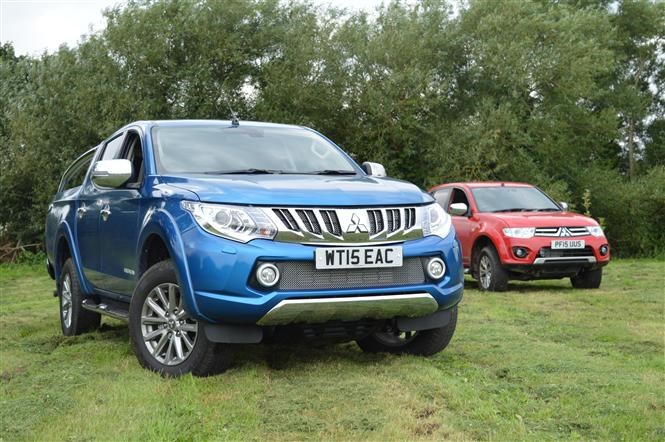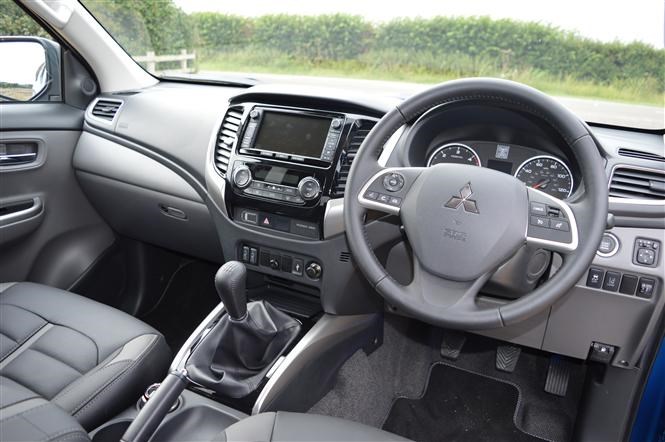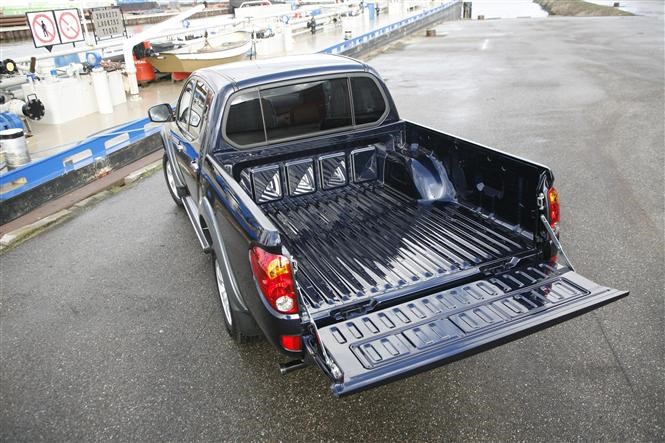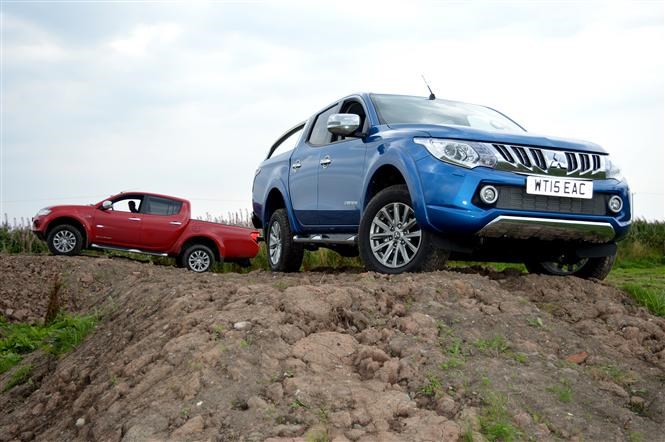As Parkers Vans reported earlier in the month, the Mitsubishi L200 Series 4 – or the current generation – will continue to be sold for another 12 months, alongside the new 2016 Series 5 model. The old L200 is competitively priced and only available in Challenger spec, but how do the two compare?
After nine years of loyal service to British businesses, the Mitsubishi L200 Series 4 was finally replaced by the Series 5 this summer. This included many years as the UK’s best-selling pickup, due to its low price and attractive range of trim levels.
The new model is more refined, has more safety specifications and is more comfortable, but there are few areas where the Series 4 still beats its successor.

In the cab
One of the first things that’s noticeable is the amount of extra room in the Series 5; the dash doesn’t protrude as much into the cab as the previous generation, which means there’s more space. The ‘layered’ dash of the previous generation has been replaced by a slightly more stylish and integrated design.
Visibility hasn’t changed as the seats, windows and dashboard sit at relatively similar heights. In the back, passengers receive more legroom and the seats have been reclined to 42-degrees, making them more comfortable.
The Challenger is generously specced with cruise control, climate control air conditioning and Bluetooth connectivity. There is even privacy glass, automatic rain and dusk sensors, leather steering wheel and gear knob.
Minus the privacy glass, rain and dusk sensors and climate control (standard air conditioning), the entry-level Series 5 (Mitsubishi L200 4Work) has all of these features along with Hill Start Assist, Stop/Start, steering mounted controls and remote keyless entry.
Only on the Titan trim do customers benefit from the privacy glass, rain and dusk sensors and climate control, along with side step entry, Lane Departure Warning system, DAB radio and fog lights.
.jpg)

On the road
Mitsubishi says it has stiffened up the chassis and suspensions, and added extra dampening to improve the ride and handling. This seems to have worked, as there is less road and engine noise perforating into the cab and there is less body roll in the corners, although it still falls short when compared with the likes of the Ford Ranger and Volkswagen Amarok.
The biggest improvement is the transmission. Although it still has a long throw, the six-speed manual transmission is less clunky than the Challenger’s five-speed, and the extra gear means than revs sit well below 2,000rpm at 70mph.
Replacing the noisy, veteran 2.5-litre 175bhp unit, the new 2.4-litre MIVEC engine is available in power ratings of 152bhp and 178bhp. Fuel economy has increased from 35.8mpg to 42.8mpg on the Series 5.

Off road
Transferring to off-road gearing is made a lot easier thanks to electronically selectable Super Select four-wheel drive system; this was manually selectable on the Series 4. The Mitsubishi Active Stability and Traction Control (MASTC) features on both the Series 4 and Series 5.
Both vehicles offer a ground clearance of 205mm, but the Series 4 has marginally better approach and departure angles of 33.4 degrees and 23.8 degrees, compared with 30 degrees and 25 or 22 degrees for the Series 5, depending on specification (rear bumper reduces maximum departure angle).
Productivity
At the business end, the Series 4 comes out on top in terms of size, with measurements of 1,505mm long, 1,470mm wide and 460mm high. The Series 4 load area is 35mm shorter, has higher side walls (475mm) and retains the 1,470mm width.
Payload is also slightly better on the Series 4 Challenger at 1,055kg compared with 1,045kg, although the Series 5 has a better towing capacity of 3,100kg, as opposed to the 3t on the Series 4.

.jpg)
Pricing and summary
Priced at just £16,499 plus VAT, there’s no beating the Mitsubishi L200 Challenger on value given its high level of specification but the entry level Series 5, which is almost as well specced, starts from £19,749 plus VAT and continues up to £23,799 on the Barbarian.
Deciding which vehicle is best for you really depends on what you’re expecting out of your pick-up; if you’re looking for an able off-roader and utility vehicle for a good price, the Series 4 is your answer. But if you want something that looks the part, is very comfortable to drive and features all the latest mod-cons, then the Series 5 should be top of the list.
Just so you know, we may receive a commission or other compensation from the links on this website - read why you should trust us.




